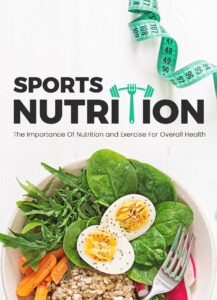Gluten-Free Diet Essentials

Before diving in, please note: This post is for informational purposes only. If you’d like to know more about how we approach topics, feel free to check out our friendly Disclaimer Page.
Hey there, amazing readers! 🖐️ Just a quick note: yes, we know there are a lot of ads here. Trust us, we get it—it’s not the prettiest look, but they help us keep this blog alive and kicking. Those pesky little ads cover the costs of all the behind-the-scenes magic, from hosting and tech stuff to creating content we hope you’ll love.
We’re committed to delivering quality posts, and your support (even just sticking around despite the ads) means everything to us. So, bear with us, and thanks for helping us keep the good vibes rolling. Now, on to the fun stuff! 😉
TRANSLATE BUTTON AT THE END OF THE ARTICLE
Understanding Gluten and Celiac Disease
Gluten is a protein found in wheat, barley, rye, and triticale, a cross between wheat and rye.
For individuals with celiac disease, an autoimmune disorder, consuming gluten triggers an immune response that attacks the lining of the small intestine.
This immune reaction can lead to various symptoms such as diarrhea, bloating, fatigue, and nutrient deficiencies.
It is crucial for those with celiac disease to adhere to a strict gluten-free diet to manage their condition effectively.
Celiac disease affects approximately 1% of the global population, making it a relatively common autoimmune disorder.
However, there is also a growing trend of non-celiac gluten sensitivity, where individuals experience similar symptoms to celiac disease without the autoimmune response.
These individuals may also benefit from a gluten-free diet to alleviate their symptoms and improve their overall well-being.
Benefits of a Gluten-Free Diet
Following a gluten-free diet can offer numerous health benefits beyond managing celiac disease or gluten sensitivity.
Some of the advantages include improved digestion, increased energy levels, and better overall gut health.
By eliminating gluten-containing foods, individuals may also reduce inflammation in the body, which is linked to various chronic conditions such as arthritis and heart disease.
Moreover, a gluten-free diet can encourage individuals to consume more nutrient-dense whole foods such as fruits, vegetables, lean proteins, and gluten-free grains.
This shift towards a more wholesome diet can lead to better weight management, improved blood sugar control, and enhanced mental clarity.
Overall, embracing a gluten-free lifestyle can be a positive step towards optimizing one’s health and well-being.
Gluten-Free Grains and Flours
When transitioning to a gluten-free diet, it’s essential to familiarize yourself with gluten-free grains and flours that can serve as nutritious alternatives.
Some popular gluten-free grains include quinoa, rice, buckwheat, and millet, which are versatile and packed with essential nutrients.
These grains can be used in various dishes such as salads, soups, and side dishes to add texture and flavor.
In terms of gluten-free flours, options like almond flour, coconut flour, and chickpea flour are excellent substitutes for traditional wheat flour in baking.
These flours offer unique flavors and textures while providing a good source of protein and healthy fats.
Experimenting with different gluten-free grains and flours can open up a world of culinary possibilities and allow you to enjoy your favorite foods without compromising on taste or texture.
Reading Food Labels for Hidden Gluten
One of the most critical aspects of maintaining a gluten-free diet is learning how to read food labels effectively.
Many packaged foods contain hidden sources of gluten, such as malt, hydrolyzed wheat protein, and modified food starch.
By carefully examining ingredient lists and looking for gluten-free certifications, you can avoid accidentally consuming gluten-containing products.
It’s also important to be aware of cross-contamination in manufacturing facilities, as even trace amounts of gluten can trigger a reaction in individuals with celiac disease.
Look for labels that indicate a product is produced in a gluten-free facility or has undergone rigorous testing for gluten content.
Taking the time to scrutinize food labels can help you make informed choices and protect your health while following a gluten-free diet.
Hidden Sources of Gluten to Avoid
In addition to reading food labels, it’s crucial to be aware of common hidden sources of gluten that may not be immediately obvious.
Soy sauce, for example, often contains wheat as a thickening agent, making it off-limits for those following a gluten-free diet.
Other hidden sources of gluten include processed meats, soups, and sauces, as well as certain medications and supplements.
When dining out, be cautious of dishes that may contain hidden gluten, such as fried foods that are battered or coated in flour.
Communicate your dietary needs to restaurant staff and ask about gluten-free options or modifications to ensure a safe dining experience.
Being vigilant about hidden sources of gluten can help you avoid accidental exposure and maintain the integrity of your gluten-free diet.
Discover "SUPERFOODS: The Key to Health and Balance🥗" 🌿🌺
Importance of Nutrient-Rich Substitutes
While eliminating gluten from your diet, it’s essential to incorporate nutrient-rich substitutes to ensure you’re meeting your nutritional needs.
Foods like fruits, vegetables, nuts, seeds, and lean proteins are excellent sources of vitamins, minerals, and antioxidants that support overall health.
Including a variety of nutrient-dense foods in your gluten-free diet can help prevent deficiencies and promote optimal well-being.
Incorporating gluten-free grains like brown rice, quinoa, and amaranth can provide essential carbohydrates, fiber, and protein to fuel your body.
Additionally, using ingredients such as coconut oil, avocado, and Greek yogurt can offer healthy fats and probiotics that support digestion and immune function.
By focusing on nutrient-rich substitutes, you can build a well-rounded gluten-free diet that nourishes your body and enhances your health.
Creating a Balanced Gluten-Free Meal Plan
Developing a balanced gluten-free meal plan is key to ensuring you’re getting the nutrients you need while enjoying a variety of delicious foods.
Start by organizing your meals around lean proteins such as fish, poultry, tofu, or legumes, paired with gluten-free grains like quinoa, brown rice, or buckwheat.
Incorporate plenty of fruits and vegetables to add color, flavor, and essential vitamins to your plate.
Snack on nutrient-dense options such as nuts, seeds, Greek yogurt, or gluten-free granola to keep your energy levels stable throughout the day.
Experiment with different herbs, spices, and condiments to enhance the taste of your meals without relying on gluten-containing ingredients.
Planning ahead and preparing meals in advance can help you stay on track with your gluten-free diet and make healthy eating a seamless part of your routine.
Safe Dining Out Options
Eating out can present challenges for individuals following a gluten-free diet, but there are safe dining out options available to enjoy a meal without compromising your health.
Look for restaurants that offer gluten-free menus or have knowledgeable staff who can accommodate your dietary needs.
Choose dishes that are naturally gluten-free, such as grilled meats, salads, or vegetable-based entrees, to minimize the risk of cross-contamination.
Communicate clearly with your server about your gluten intolerance and ask questions about how dishes are prepared to ensure they meet your dietary requirements.
Be cautious of shared cooking surfaces, fryers, and utensils that may come into contact with gluten-containing ingredients.
With a bit of planning and communication, dining out can be a stress-free experience that allows you to savor delicious meals while adhering to your gluten-free lifestyle.
Managing Gluten-Free Lifestyle Challenges
While following a gluten-free diet can offer numerous health benefits, it also comes with its unique set of challenges.
From social gatherings to travel and special occasions, navigating a gluten-free lifestyle requires careful planning and communication.
Inform friends, family, and colleagues about your dietary needs to ensure they can accommodate your preferences and provide safe food options.
When traveling, research gluten-free dining options in advance and pack gluten-free snacks to have on hand in case of limited food choices.
Explore local markets and grocery stores to stock up on gluten-free pantry staples and ingredients to prepare your meals.
By staying proactive and informed, you can overcome the challenges of maintaining a gluten-free lifestyle and enjoy a fulfilling and nourishing diet wherever you go.
Gluten-Free Cooking and Baking Tips
Cooking and baking without gluten may seem daunting at first, but with the right tips and techniques, you can create delicious gluten-free dishes with ease.
When baking, experiment with gluten-free flours like almond flour, coconut flour, or tapioca flour to achieve the desired texture and consistency in your recipes.
Consider adding xanthan gum or guar gum to gluten-free baked goods to improve their structure and prevent crumbling.
In cooking, opt for naturally gluten-free ingredients such as whole grains, lean proteins, and fresh produce to create flavorful and nutritious meals.
Use herbs, spices, and aromatics to enhance the taste of your dishes without relying on gluten-containing sauces or seasonings.
Invest in quality kitchen tools and equipment, such as separate cutting boards, utensils, and baking pans, to prevent cross-contamination and ensure the safety of your gluten-free creations.
Gluten-Free Snack Ideas
Maintaining a gluten-free diet doesn’t mean sacrificing flavor or convenience when it comes to snacking.
There are plenty of gluten-free snack ideas that are delicious, satisfying, and easy to prepare.
Consider options like:
Fresh fruit with nut butter
Rice cakes with avocado and sea salt
Discover "Sports Nutrition: The Importance of Nutrition and Exercise for Overall Health 🥗🏋️"

Greek yogurt with honey and berries
Trail mix with nuts, seeds, and dried fruit
Veggie sticks with hummus or guacamole
These snack ideas provide a balance of carbohydrates, protein, and healthy fats to keep you full and energized between meals.
Experiment with different flavor combinations and ingredients to find your favorite gluten-free snacks that satisfy your cravings and nourish your body.
Staying Committed to a Gluten-Free Diet
Maintaining a gluten-free diet requires commitment, dedication, and a positive mindset to navigate the challenges and enjoy the benefits of a gluten-free lifestyle.
Stay informed about hidden sources of gluten, read food labels meticulously, and communicate your dietary needs clearly when dining out or attending social events.
Surround yourself with a supportive community of friends, family, or online groups who understand your dietary restrictions and can offer encouragement and guidance along the way.
Remember that a gluten-free diet is not a limitation but an opportunity to explore new flavors, ingredients, and cooking techniques that can enhance your culinary experience.
Embrace the journey of discovering delicious gluten-free recipes, snacks, and meals that nourish your body and delight your taste buds.
With a positive attitude and a proactive approach, you can stay committed to your gluten-free diet and reap the rewards of improved health, vitality, and well-being.
Conclusion
In conclusion, understanding the basics of gluten and celiac disease is essential for anyone considering a gluten-free diet.
By recognizing the benefits of a gluten-free lifestyle and learning about safe substitutes and hidden sources of gluten, individuals can confidently embrace a diet that supports their health and well-being.
With careful planning, mindful choices, and a positive attitude, staying committed to a gluten-free diet can be a rewarding journey towards optimal health and vitality.
Remember, it’s not just about avoiding gluten – it’s about nourishing your body with nutrient-rich foods, exploring new culinary possibilities, and enjoying delicious meals that cater to your dietary needs.
Embrace the gluten-free lifestyle with enthusiasm and creativity, and you’ll discover a world of flavors and experiences that enhance your overall quality of life.

The Enlightenment Journey is a remarkable collection of writings authored by a distinguished group of experts in the fields of spirituality, new age, and esoteric knowledge.
This anthology features a diverse assembly of well-experienced authors who bring their profound insights and credible perspectives to the forefront.
Each contributor possesses a wealth of knowledge and wisdom, making them authorities in their respective domains.
Together, they offer readers a transformative journey into the realms of spiritual growth, self-discovery, and esoteric enlightenment.
The Enlightenment Journey is a testament to the collective expertise of these luminaries, providing readers with a rich tapestry of ideas and information to illuminate their spiritual path.
Our Diverse Expertise 🌟
While our primary focus is on spirituality and esotericism, we are equally passionate about exploring a wide range of other topics and niches 🌍📚. Our experienced team is dedicated to delivering high-quality, informative content across various subjects ✨.
To ensure we provide the most accurate and valuable insights, we collaborate with trusted experts in their respective domains 🧑🏫👩🏫. This allows us to offer well-rounded perspectives and knowledge to our readers.
Our blog originally focused on spirituality and metaphysics, but we’ve since expanded to cover a wide range of niches. Don’t worry—we continue to publish a lot of articles on spirituality! Frequently visit our blog to explore our diverse content and stay tuned for more insightful reads.





